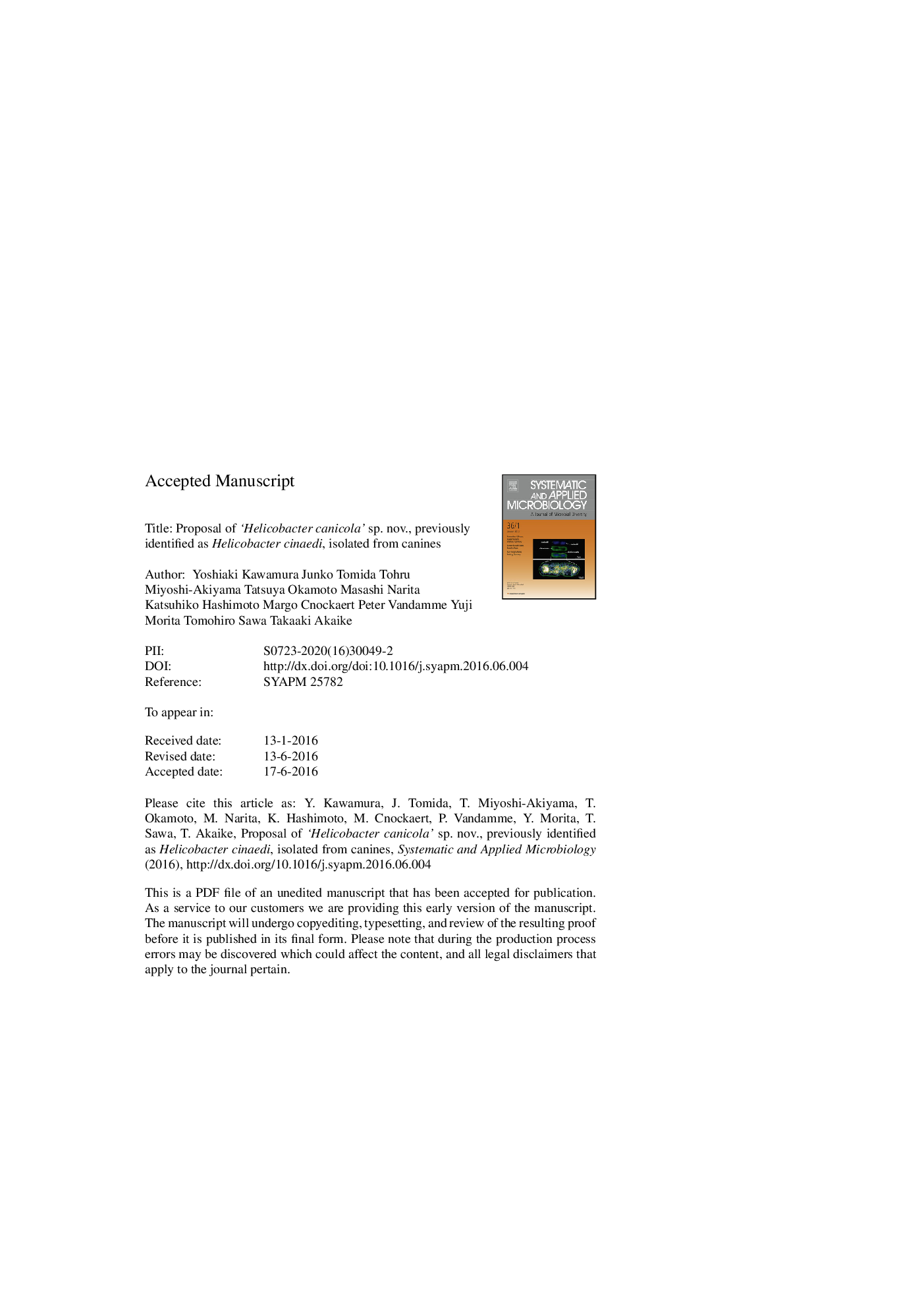| Article ID | Journal | Published Year | Pages | File Type |
|---|---|---|---|---|
| 10879358 | Systematic and Applied Microbiology | 2016 | 23 Pages |
Abstract
During the course of our taxonomic investigation of Helicobacter cinaedi, it was realized that the strains isolated from dogs, which have been identified as H. cinaedi, showed different biochemical traits than did the isolates obtained from humans. None of the three dog isolates could reduce nitrate to nitrite, whereas all of the human H. cinaedi isolates could do so. The dog isolates showed a strong positive alkaline phosphatase reaction and could grow at 42 °C, however the human isolates showed negative to very weak responses to those tests. The GyrA protein based phylogenetic analysis showed that the three isolates from dogs formed a slightly distinct cluster from the human isolate cluster. Phylogenetic analysis of the 16S rRNA, 23S rRNA, gyrB, and hsp60 gene sequences further confirmed that the dog isolates differed from the human H. cinaedi isolate cluster. The whole-genome in silico DNA similarities of each isolate based on their full genome sequences revealed that the isolates from dogs shared more than 94.9% ANIb (average nucleotide identity based on BLAST), while 94.0% ANIb were found between the isolates from dogs and the humans, including the H. cinaedi type strain ATCC BAA-847T (= CCUG 18818T). From these data, we propose a new species, 'H. canicola' sp. nov., for the isolates from dogs. The type strain is PAGU 1410T (CCUG 33887T = LMG 29580T).
Related Topics
Life Sciences
Agricultural and Biological Sciences
Ecology, Evolution, Behavior and Systematics
Authors
Yoshiaki Kawamura, Junko Tomida, Tohru Miyoshi-Akiyama, Tatsuya Okamoto, Masashi Narita, Katsuhiko Hashimoto, Margo Cnockaert, Peter Vandamme, Yuji Morita, Tomohiro Sawa, Takaaki Akaike,
